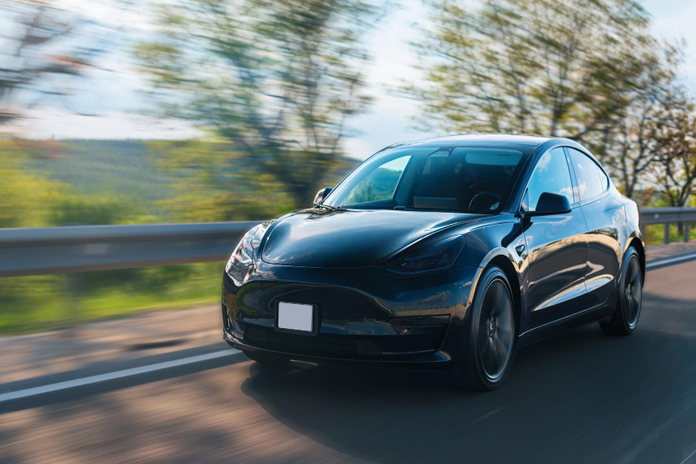Tesla (NASDAQ:TSLA) shares jumped 2.5% on Thursday following the electric vehicle manufacturer’s confirmation of plans to introduce its Full Self-Driving technology in China and Europe. The FSD software, designed to assist drivers by managing tasks such as acceleration, braking, and steering under human supervision, is awaiting regulatory approval in both regions. Tesla’s ambitious plans mark a pivotal moment for the company, which is also set to unveil its highly anticipated “Cybercab” robotaxi later this year, powered by the same advanced driver assistance system.
Tesla’s Global FSD Expansion
The Tesla Full Self-Driving launch has been a topic of much anticipation and speculation. CEO Elon Musk has repeatedly expressed optimism about Tesla’s ability to secure regulatory approvals in major markets like Europe and China by the end of the year. Should the approvals come through, Tesla’s FSD could transform urban and highway driving by offering advanced autonomous features that allow vehicles to navigate without constant human input.
For right-hand drive markets, Musk noted that the FSD launch could occur as early as late in the first quarter or sometime in the second quarter of the following year. This rollout, if successful, would position Tesla as a global leader in self-driving technology, bringing it closer to realizing its vision of fully autonomous driving.
However, regulatory challenges remain. Europe, in particular, has stricter oversight of autonomous technologies, and many analysts predict that the approval process may take longer compared to other regions. Nevertheless, investors are optimistic about the potential of FSD in markets like China, where regulatory hurdles might be less stringent, thanks to Tesla’s collaboration with local companies like Baidu (NASDAQ:BIDU) to integrate navigation systems.
Self-Driving Technology: A Double-Edged Sword
While Tesla’s Full Self-Driving ambitions are bold, Wall Street has approached self-driving technologies with caution. Regulatory approval is notoriously difficult to obtain, with agencies around the world focusing on safety and reliability concerns. Despite these challenges, investors are closely watching the potential for regulatory changes in the U.S. Tesla’s backers believe that the technology could receive a regulatory boost if policies were to shift under a new administration, particularly if former President Donald Trump were to return to office.
In China, the future of FSD looks more promising. Shanghai, home to one of Tesla’s largest gigafactories, recently allowed a small number of Tesla vehicles to conduct FSD tests on its roads. This development could accelerate the approval and rollout of the technology in a region where Tesla faces stiff competition from domestic EV makers.
Tesla’s History of Ambitious Deadlines
Elon Musk is known for setting aggressive targets, and Tesla’s Full Self-Driving timeline is no exception. The CEO has repeatedly faced skepticism from investors and analysts due to missed deadlines for projects such as the Tesla Semi, the Cybertruck, and now the FSD system. While FSD is undoubtedly a breakthrough in autonomous driving, Musk’s tendency to overpromise and underdeliver has made some stakeholders cautious about trusting Tesla’s timelines.
Despite these concerns, Tesla has continued to innovate, recently announcing new features such as “Actually Smart Summon” and FSD for the Cybertruck, Tesla’s forthcoming electric pickup. The next version of the FSD software, which is expected to require fewer human interventions, will be rolled out in the coming months, keeping Tesla on the cutting edge of autonomous technology.
Competitive Pressures and Tesla’s Response
Tesla’s success in launching its Full Self-Driving software in China and Europe could give it a significant edge over competitors in the autonomous vehicle space. However, it faces competition from domestic Chinese automakers that are also developing self-driving capabilities. Moreover, companies like Alphabet’s Waymo and GM’s Cruise are also making significant strides in autonomous driving technologies, intensifying the race to dominate the self-driving car market.
Tesla’s FSD launch, coupled with the unveiling of its Cybercab robotaxi, represents a critical moment for the company. If successful, Tesla could significantly expand its market share and solidify its leadership in autonomous driving. However, if regulatory hurdles or technological issues delay the FSD launch, the company could face further scrutiny from investors and stakeholders.
Conclusion: Tesla’s Path Forward
Tesla’s stock rise on news of its Full Self-Driving launch plans signals investor confidence in the company’s future, but challenges remain. Regulatory approvals in Europe and China will be crucial to the success of the FSD rollout, and the competitive landscape in the self-driving space continues to evolve. As Tesla moves closer to unveiling new autonomous products like the Cybercab, it is clear that the company remains at the forefront of innovation in the electric vehicle and self-driving markets.
However, whether Tesla can meet its ambitious deadlines and maintain investor trust will depend on its ability to navigate regulatory challenges and maintain its competitive edge in the coming years.
Featured Image: Freepik



